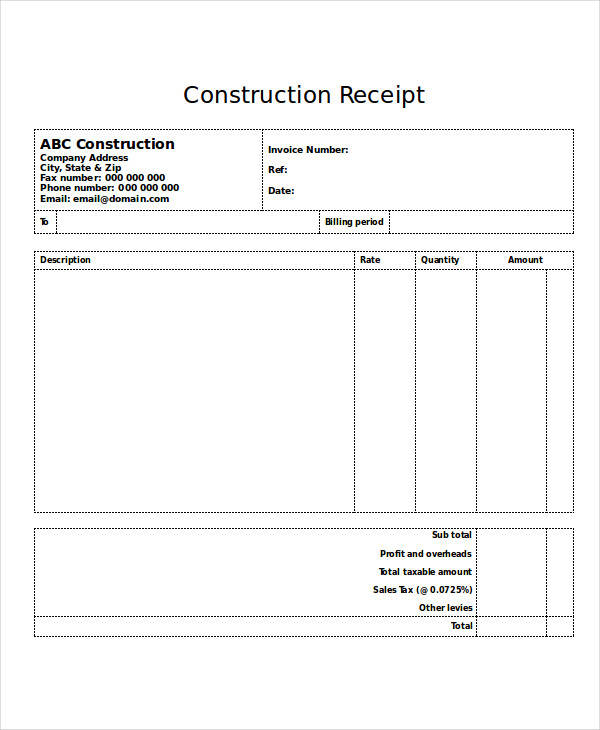When it comes to running a construction business, keeping track of your finances is crucial. One important aspect of managing your finances is creating and managing receipts for your clients. A construction receipt template can help simplify this process and ensure that you have a clear record of all financial transactions.
In this article, we will explore what a construction receipt template is, why it is important, and how you can create one that meets your specific needs.
What is a Construction Receipt?
A construction receipt template is a pre-designed document that allows you to create professional-looking receipts for your construction business. It includes all the essential information that should be included in a receipt, such as the date of the transaction, the client’s name and contact information, a description of the services provided, the total amount paid, and any applicable taxes or fees. By using a template, you can save time and ensure that all necessary information is included in your receipts.
Construction receipt templates are typically created using word processing or spreadsheet software. They can be customized to include your company logo, colors, and any additional information specific to your business. Once you have created a template, you can easily fill in the required information for each transaction, print the receipt, and provide a copy to your client.
Why are Construction receipts important?
Using a construction receipt template offers several benefits for your construction business:
- Professionalism: A well-designed receipt can enhance the professional image of your business. It shows that you value organization and attention to detail.
- Accuracy: Receipt templates help ensure that all necessary information is included in each receipt, reducing the risk of errors or omissions.
- Record-keeping: Receipts serve as a record of financial transactions, making it easier to track income, expenses, and taxes.
- Client satisfaction: Providing your clients with clear and professional receipts can enhance their satisfaction and trust in your business.
Overall, using a construction receipt template can help streamline your financial processes, improve your professionalism, and enhance your record-keeping capabilities.
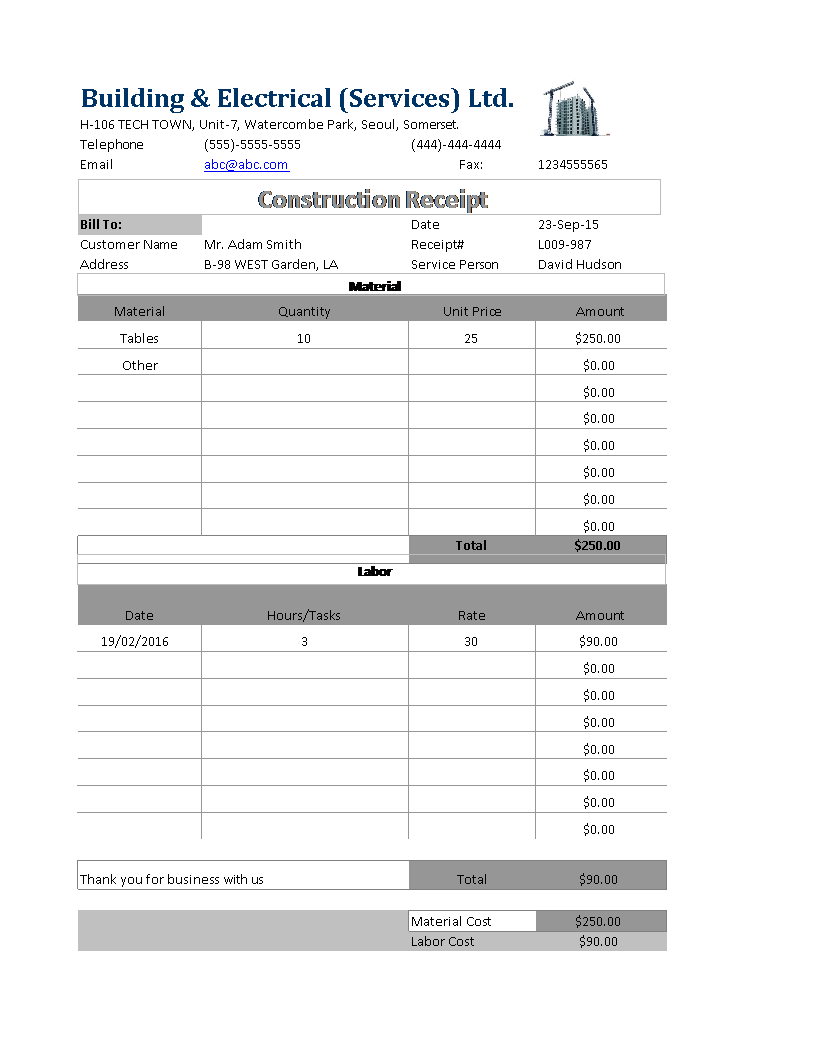
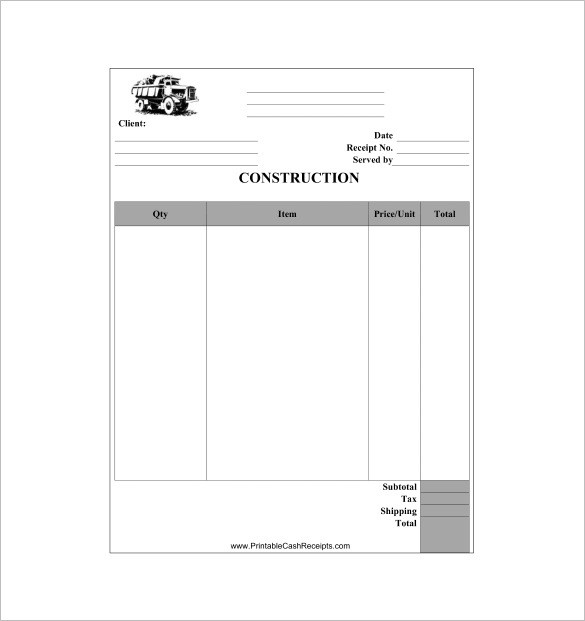
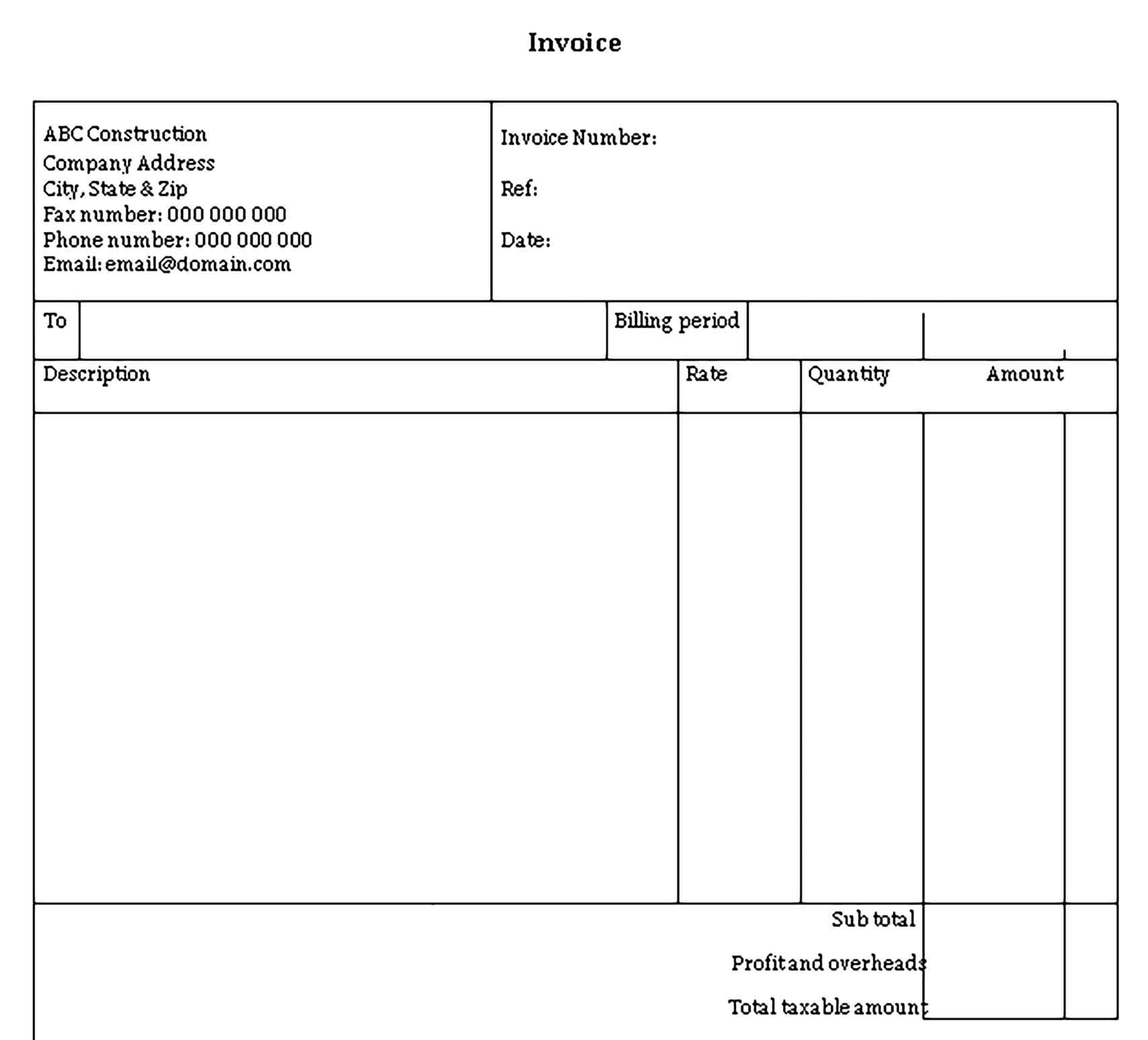
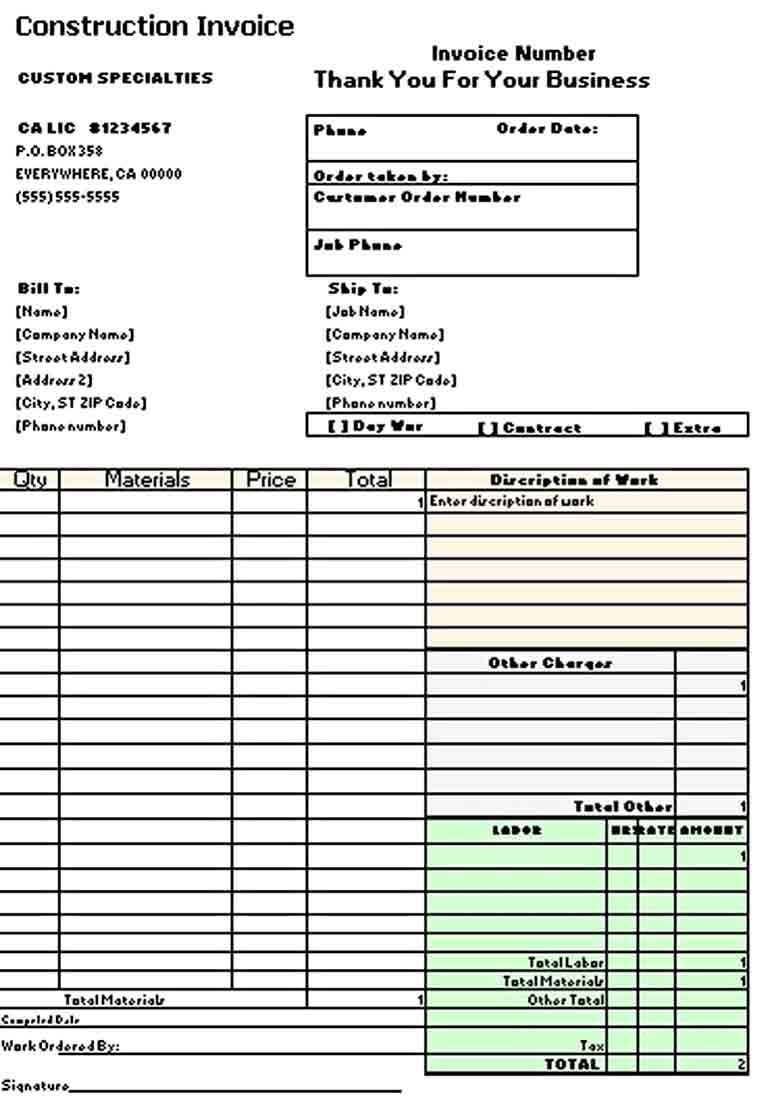
How to Create a Construction Receipt
Creating a construction receipt template is a relatively simple process. Here’s a step-by-step guide to help you get started:
1. Choose a Software
The first step is to choose the software you will use to create your template. Popular options include Microsoft Word, Excel, and Google Docs or Sheets. Select the software that you are most comfortable using and that offers the features you need.
2. Define the Layout
Next, decide on the layout of your receipt template. Consider the information you want to include and how you want it to be organized. Common sections include the header (company name and logo), client information, transaction details, and payment information. You may also want to include space for any additional notes or terms and conditions.
3. Customize the Design
Customize the design of your template to match your company branding. Add your logo, choose appropriate fonts and colors, and consider using tables or borders to structure the information. Remember to keep the design professional and easy to read.
4. Add Relevant Fields
Include all the necessary fields in your template, such as the client’s name and contact information, the date of the transaction, a description of the services provided, itemized costs, taxes, and the total amount paid. If applicable, include space for signatures or other verification methods.
5. Test and Refine
Before finalizing your template, test it by creating a sample receipt and reviewing it for any errors or formatting issues. Make any necessary adjustments to ensure that the template meets your needs and looks professional.
Tips for Using Construction Receipt Effectively
Here are some tips to help you make the most of your construction receipt templates:
1. Keep a Digital and Physical Copy
Make sure to save a digital copy of each receipt for your records and provide a printed copy to your client. This ensures that you have a backup in case of loss or damage.
2. Customize for Each Client
While a template can save time, it’s important to customize each receipt with the client’s specific information and transaction details. This personalization adds a personal touch and increases the professionalism of your business.
3. Use Sequential Receipt Numbers
Assign unique receipt numbers to each transaction to help with organization and tracking. This can be as simple as using sequential numbers or incorporating a system that aligns with your accounting practices.
4. Review and Reconcile Regularly
Regularly review your receipts and reconcile them with your financial records to ensure accuracy and identify any discrepancies. This will help you maintain a clear and up-to-date financial overview of your construction business.
5. Store Receipts for an Appropriate Period
Depending on your country’s tax regulations, you may need to retain receipts for a certain period. Check with your local tax authorities to determine the required retention period and ensure compliance.
Conclusion
A construction receipt template is a valuable tool for any construction business. It simplifies the process of creating professional receipts, enhances your business’s professionalism, and improves your record-keeping capabilities. By following the steps outlined in this article, you can create a customized template that meets your specific needs. Remember to review and reconcile your receipts regularly to maintain accurate financial records for your construction business.
Construction Receipt Template Word – Download
